Citibank 2014 Annual Report Download - page 53
Download and view the complete annual report
Please find page 53 of the 2014 Citibank annual report below. You can navigate through the pages in the report by either clicking on the pages listed below, or by using the keyword search tool below to find specific information within the annual report.-
 1
1 -
 2
2 -
 3
3 -
 4
4 -
 5
5 -
 6
6 -
 7
7 -
 8
8 -
 9
9 -
 10
10 -
 11
11 -
 12
12 -
 13
13 -
 14
14 -
 15
15 -
 16
16 -
 17
17 -
 18
18 -
 19
19 -
 20
20 -
 21
21 -
 22
22 -
 23
23 -
 24
24 -
 25
25 -
 26
26 -
 27
27 -
 28
28 -
 29
29 -
 30
30 -
 31
31 -
 32
32 -
 33
33 -
 34
34 -
 35
35 -
 36
36 -
 37
37 -
 38
38 -
 39
39 -
 40
40 -
 41
41 -
 42
42 -
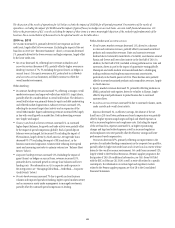 43
43 -
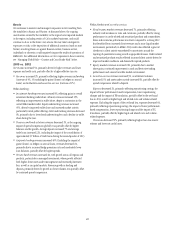 44
44 -
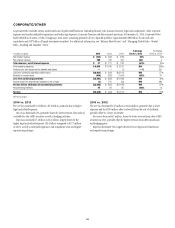 45
45 -
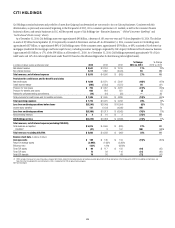 46
46 -
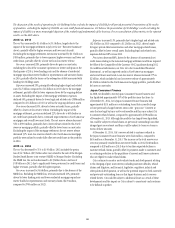 47
47 -
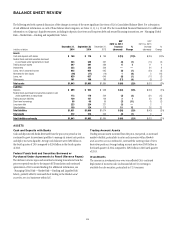 48
48 -
 49
49 -
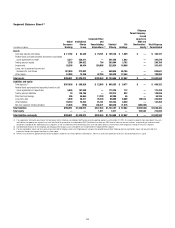 50
50 -
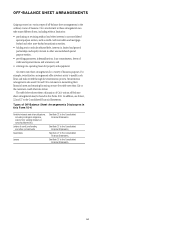 51
51 -
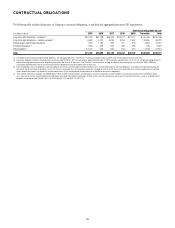 52
52 -
 53
53 -
 54
54 -
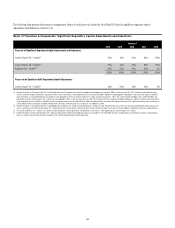 55
55 -
 56
56 -
 57
57 -
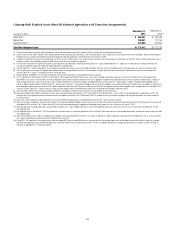 58
58 -
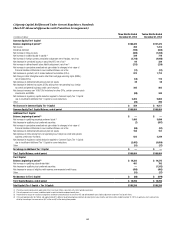 59
59 -
 60
60 -
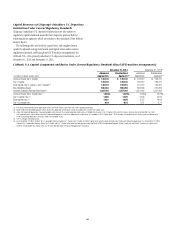 61
61 -
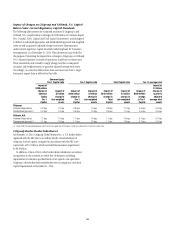 62
62 -
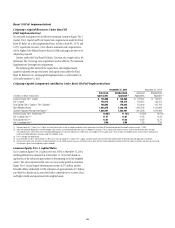 63
63 -
 64
64 -
 65
65 -
 66
66 -
 67
67 -
 68
68 -
 69
69 -
 70
70 -
 71
71 -
 72
72 -
 73
73 -
 74
74 -
 75
75 -
 76
76 -
 77
77 -
 78
78 -
 79
79 -
 80
80 -
 81
81 -
 82
82 -
 83
83 -
 84
84 -
 85
85 -
 86
86 -
 87
87 -
 88
88 -
 89
89 -
 90
90 -
 91
91 -
 92
92 -
 93
93 -
 94
94 -
 95
95 -
 96
96 -
 97
97 -
 98
98 -
 99
99 -
 100
100 -
 101
101 -
 102
102 -
 103
103 -
 104
104 -
 105
105 -
 106
106 -
 107
107 -
 108
108 -
 109
109 -
 110
110 -
 111
111 -
 112
112 -
 113
113 -
 114
114 -
 115
115 -
 116
116 -
 117
117 -
 118
118 -
 119
119 -
 120
120 -
 121
121 -
 122
122 -
 123
123 -
 124
124 -
 125
125 -
 126
126 -
 127
127 -
 128
128 -
 129
129 -
 130
130 -
 131
131 -
 132
132 -
 133
133 -
 134
134 -
 135
135 -
 136
136 -
 137
137 -
 138
138 -
 139
139 -
 140
140 -
 141
141 -
 142
142 -
 143
143 -
 144
144 -
 145
145 -
 146
146 -
 147
147 -
 148
148 -
 149
149 -
 150
150 -
 151
151 -
 152
152 -
 153
153 -
 154
154 -
 155
155 -
 156
156 -
 157
157 -
 158
158 -
 159
159 -
 160
160 -
 161
161 -
 162
162 -
 163
163 -
 164
164 -
 165
165 -
 166
166 -
 167
167 -
 168
168 -
 169
169 -
 170
170 -
 171
171 -
 172
172 -
 173
173 -
 174
174 -
 175
175 -
 176
176 -
 177
177 -
 178
178 -
 179
179 -
 180
180 -
 181
181 -
 182
182 -
 183
183 -
 184
184 -
 185
185 -
 186
186 -
 187
187 -
 188
188 -
 189
189 -
 190
190 -
 191
191 -
 192
192 -
 193
193 -
 194
194 -
 195
195 -
 196
196 -
 197
197 -
 198
198 -
 199
199 -
 200
200 -
 201
201 -
 202
202 -
 203
203 -
 204
204 -
 205
205 -
 206
206 -
 207
207 -
 208
208 -
 209
209 -
 210
210 -
 211
211 -
 212
212 -
 213
213 -
 214
214 -
 215
215 -
 216
216 -
 217
217 -
 218
218 -
 219
219 -
 220
220 -
 221
221 -
 222
222 -
 223
223 -
 224
224 -
 225
225 -
 226
226 -
 227
227 -
 228
228 -
 229
229 -
 230
230 -
 231
231 -
 232
232 -
 233
233 -
 234
234 -
 235
235 -
 236
236 -
 237
237 -
 238
238 -
 239
239 -
 240
240 -
 241
241 -
 242
242 -
 243
243 -
 244
244 -
 245
245 -
 246
246 -
 247
247 -
 248
248 -
 249
249 -
 250
250 -
 251
251 -
 252
252 -
 253
253 -
 254
254 -
 255
255 -
 256
256 -
 257
257 -
 258
258 -
 259
259 -
 260
260 -
 261
261 -
 262
262 -
 263
263 -
 264
264 -
 265
265 -
 266
266 -
 267
267 -
 268
268 -
 269
269 -
 270
270 -
 271
271 -
 272
272 -
 273
273 -
 274
274 -
 275
275 -
 276
276 -
 277
277 -
 278
278 -
 279
279 -
 280
280 -
 281
281 -
 282
282 -
 283
283 -
 284
284 -
 285
285 -
 286
286 -
 287
287 -
 288
288 -
 289
289 -
 290
290 -
 291
291 -
 292
292 -
 293
293 -
 294
294 -
 295
295 -
 296
296 -
 297
297 -
 298
298 -
 299
299 -
 300
300 -
 301
301 -
 302
302 -
 303
303 -
 304
304 -
 305
305 -
 306
306 -
 307
307 -
 308
308 -
 309
309 -
 310
310 -
 311
311 -
 312
312 -
 313
313 -
 314
314 -
 315
315 -
 316
316 -
 317
317 -
 318
318 -
 319
319 -
 320
320 -
 321
321 -
 322
322 -
 323
323 -
 324
324 -
 325
325 -
 326
326 -
 327
327
 |
 |
36
CAPITAL RESOURCES
Overview
Capital is used principally to support assets in Citi’s businesses and to
absorb credit, market and operational losses. Citi primarily generates
capital through earnings from its operating businesses. Citi may augment
its capital through issuances of common stock, noncumulative perpetual
preferred stock and equity issued through awards under employee benefit
plans, among other issuances. During 2014, Citi continued to raise capital
through noncumulative perpetual preferred stock issuances amounting to
approximately $3.7 billion, resulting in a total of approximately $10.5 billion
outstanding as of December 31, 2014.
Further, Citi’s capital levels may also be affected by changes in regulatory
and accounting standards as well as the impact of future events on Citi’s
business results, such as corporate and asset dispositions.
Capital Management
Citigroup’s capital management framework is designed to ensure that
Citigroup and its principal subsidiaries maintain sufficient capital consistent
with each entity’s respective risk profile and all applicable regulatory
standards and guidelines. Citi assesses its capital adequacy against a series
of internal quantitative capital goals, designed to evaluate the Company’s
capital levels in expected and stressed economic environments. Underlying
these internal quantitative capital goals are strategic capital considerations,
centered on preserving and building financial strength. Senior management,
with oversight from Citigroup’s Board of Directors, is responsible for the
capital assessment and planning process, which is integrated into Citi’s
capital plan. Implementation of the capital plan is carried out mainly
through Citigroup’s Asset and Liability Committee, with oversight from the
Risk Management Committee of Citigroup’s Board of Directors. Asset and
liability committees are also established globally and for each significant
legal entity, region, country and/or major line of business.
Current Regulatory Capital Standards
Overview
Citi is subject to regulatory capital standards issued by the Federal Reserve
Board which, commencing with 2014, constitute the substantial adoption of
the final U.S. Basel III rules (Final Basel III Rules), such as those governing
the composition of regulatory capital (including the application of regulatory
capital adjustments and deductions) and, initially for the second quarter of
2014 in conjunction with the granting of permission by the Federal Reserve
Board to exit parallel reporting, approval to apply the Basel III Advanced
Approaches framework in deriving risk-based capital ratios. Further, the
Final Basel III Rules implement the “capital floor provision” of the so-called
“Collins Amendment” of the Dodd-Frank Act, which requires Advanced
Approaches banking organizations, such as Citi and Citibank, N.A., upon
exiting parallel reporting, to calculate each of the three risk-based capital
ratios (Common Equity Tier 1 Capital, Tier 1 Capital and Total Capital)
under both the Standardized Approach starting on January 1, 2015 (or, for
2014, prior to the effective date of the Standardized Approach, the Basel I
credit risk and Basel II.5 market risk capital rules, subsequently referred to in
this section as the Basel III 2014 Standardized Approach) and the Advanced
Approaches and publicly report (as well as measure compliance against) the
lower of each of the resulting capital ratios.
Under the Final Basel III Rules, Citi, as with principally all U.S. banking
organizations, is also required to maintain a minimum Tier 1 Leverage ratio
of 4% commencing in 2014. The Tier 1 Leverage ratio, a non-risk-based
measure of capital adequacy, is defined as Tier 1 Capital as a percentage
of quarterly adjusted average total assets less amounts deducted from
Tier 1 Capital.
